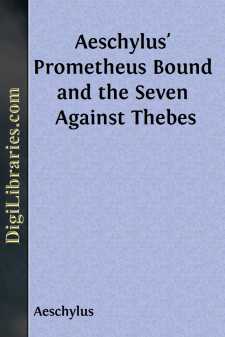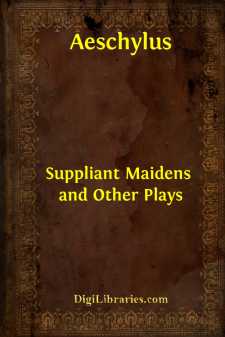Categories
- Antiques & Collectibles 13
- Architecture 36
- Art 48
- Bibles 22
- Biography & Autobiography 813
- Body, Mind & Spirit 138
- Business & Economics 28
- Children's Books 12
- Children's Fiction 9
- Computers 4
- Cooking 94
- Crafts & Hobbies 4
- Drama 346
- Education 46
- Family & Relationships 57
- Fiction 11821
- Games 19
- Gardening 17
- Health & Fitness 34
- History 1377
- House & Home 1
- Humor 147
- Juvenile Fiction 1873
- Juvenile Nonfiction 202
- Language Arts & Disciplines 88
- Law 16
- Literary Collections 686
- Literary Criticism 179
- Mathematics 13
- Medical 41
- Music 40
- Nature 179
- Non-Classifiable 1768
- Performing Arts 7
- Periodicals 1453
- Philosophy 64
- Photography 2
- Poetry 896
- Political Science 203
- Psychology 42
- Reference 154
- Religion 508
- Science 126
- Self-Help 81
- Social Science 81
- Sports & Recreation 34
- Study Aids 3
- Technology & Engineering 59
- Transportation 23
- Travel 463
- True Crime 29
The Agamemnon of Aeschylus Translated into English Rhyming Verse with Explanatory Notes
by: Aeschylus
Categories:
Description:
Excerpt
PREFACE
The sense of difficulty, and indeed of awe, with which a scholar approaches the task of translating the Agamemnon depends directly on its greatness as poetry. It is in part a matter of diction. The language of Aeschylus is an extraordinary thing, the syntax stiff and simple, the vocabulary obscure, unexpected, and steeped in splendour. Its peculiarities cannot be disregarded, or the translation will be false in character. Yet not Milton himself could produce in English the same great music, and a translator who should strive ambitiously to represent the complex effect of the original would clog his own powers of expression and strain his instrument to breaking. But, apart from the diction in this narrower sense, there is a quality of atmosphere surrounding the Agamemnon which seems almost to defy reproduction in another setting, because it depends in large measure on the position of the play in the historical development of Greek literature.
If we accept the view that all Art to some extent, and Greek tragedy in a very special degree, moves in its course of development from Religion to Entertainment, from a Service to a Performance, the Agamemnon seems to stand at a critical point where the balance of the two elements is near perfection. The drama has come fully to life, but the religion has not yet faded to a formality. The Agamemnon is not, like Aeschylus' Suppliant Women, a statue half-hewn out of the rock. It is a real play, showing clash of character and situation, suspense and movement, psychological depth and subtlety. Yet it still remains something more than a play. Its atmosphere is not quite of this world. In the long lyrics especially one feels that the guiding emotion is not the entertainer's wish to thrill an audience, not even perhaps the pure artist's wish to create beauty, but something deeper and more prophetic, a passionate contemplation and expression of truth; though of course the truth in question is something felt rather than stated, something that pervades life, an eternal and majestic rhythm like the movement of the stars.
Thus, if Longinus is right in defining Sublimity as "the ring, or resonance, of greatness of soul," one sees in part where the sublimity of the Agamemnon comes from. And it is worth noting that the faults which some critics have found in the play are in harmony with this conclusion. For the sublimity that is rooted in religion tolerates some faults and utterly refuses to tolerate others. The Agamemnon may be slow in getting to work; it may be stiff with antique conventions. It never approaches to being cheap or insincere or shallow or sentimental or showy. It never ceases to be genuinely a "criticism of life." The theme which it treats, for instance, is a great theme in its own right; it is not a made-up story ingeniously handled.
The trilogy of the Oresteia, of which this play is the first part, centres on the old and everlastingly unsolved problem of
The ancient blinded vengeance and the wrong that amendeth wrong....





